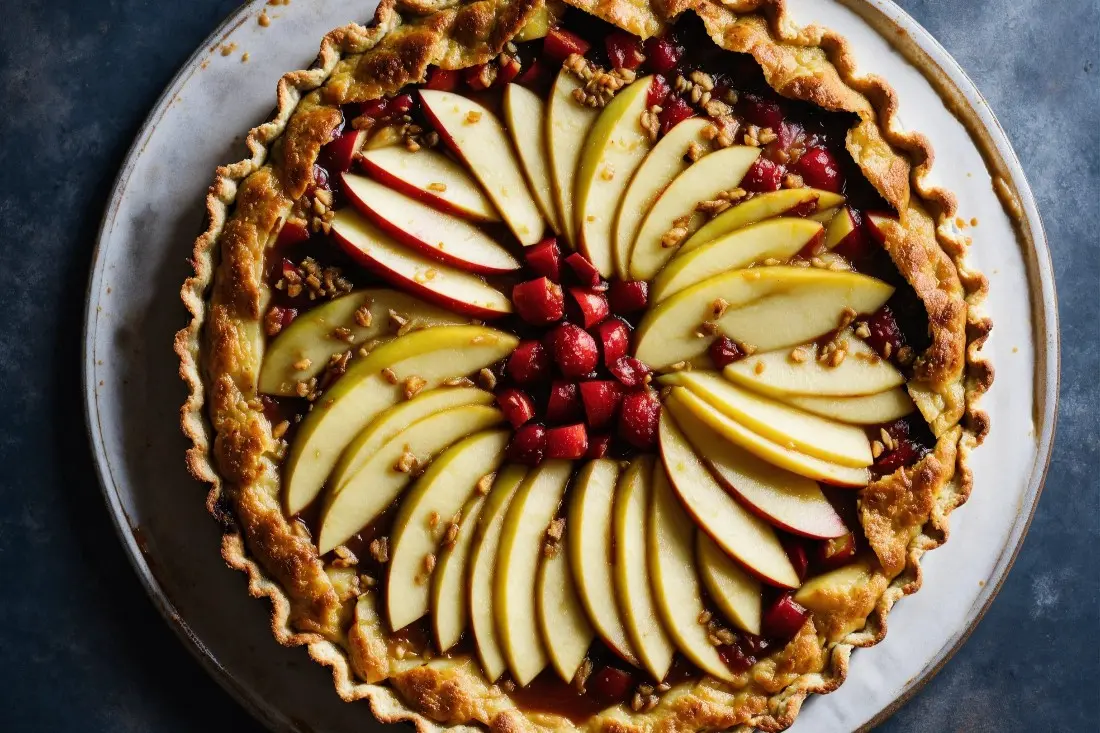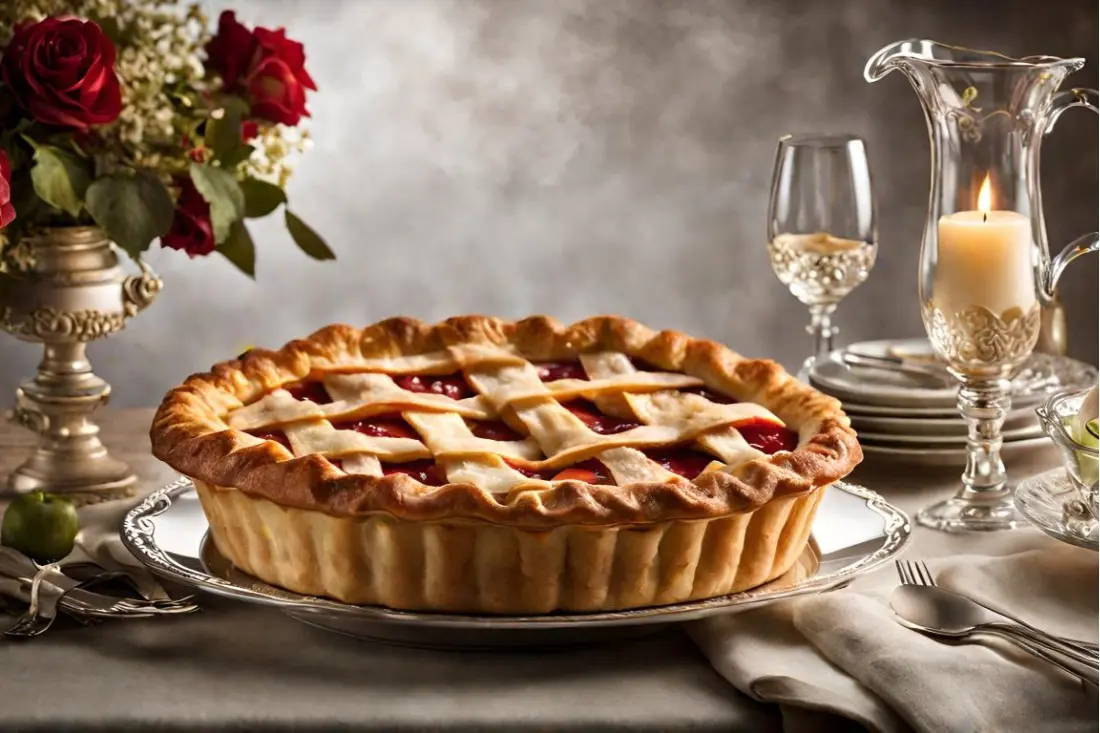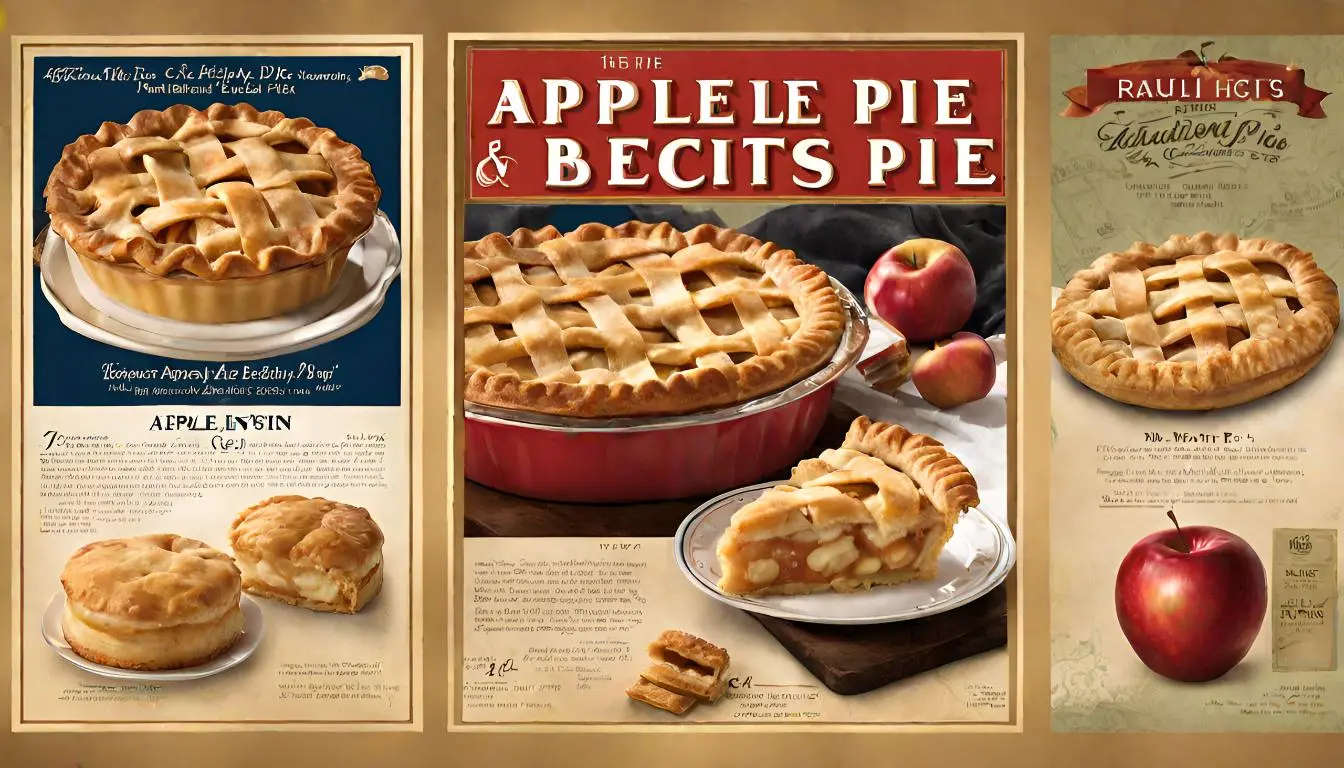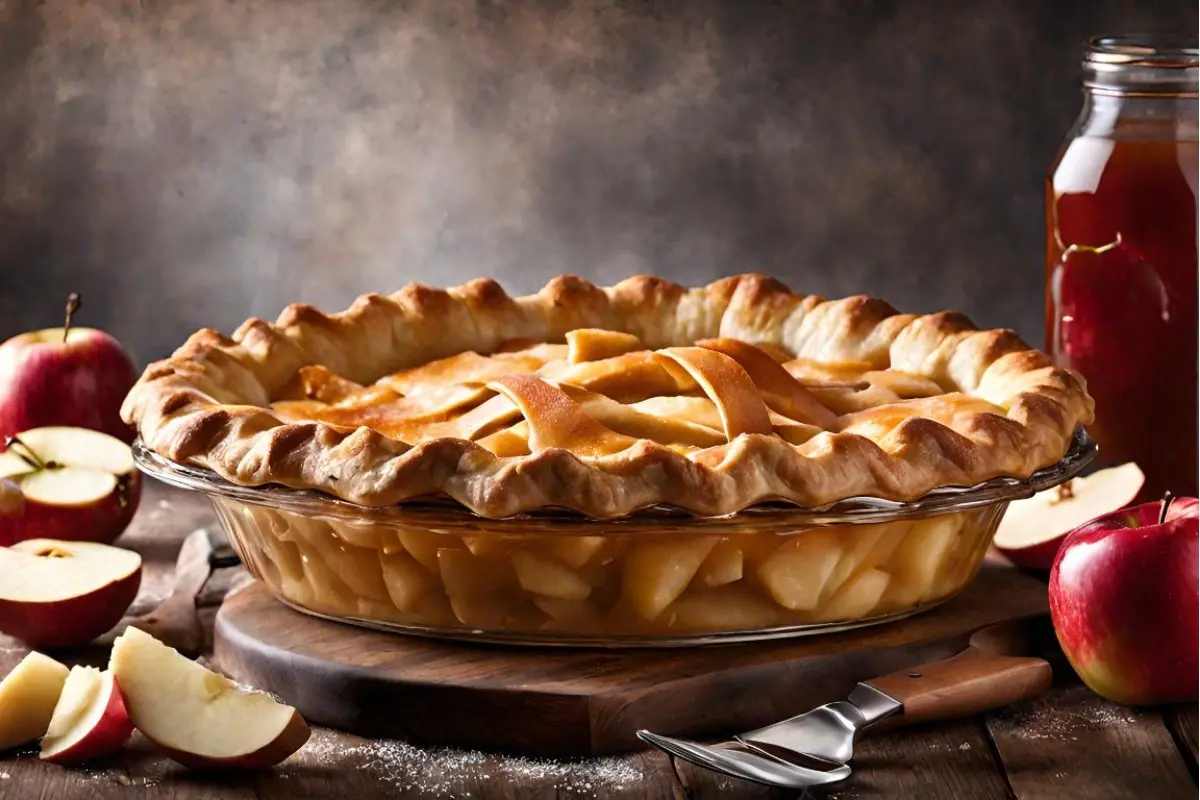Crafting the perfect apple pie is an art form, a delicate balance of flavors and textures that can elevate a simple dessert into a culinary masterpiece. However, even the most experienced bakers can stumble when it comes to the heart of the pie: the filling. In this comprehensive guide, we’ll explore the common pitfalls that can turn your apple pie filling from a delightful treat into a disappointing disaster. From selecting the right apples to mastering the thickness of the filling, each step is crucial in achieving that perfect slice of pie. So, let’s embark on this journey to pie perfection, ensuring that your next apple pie is nothing short of spectacular.
Introduction to Apple Pie Filling Mistakes
The Importance of Perfect Apple Pie Filling
When it comes to baking an apple pie, the filling is just as crucial as the crust. A perfect filling is the heart of the pie, offering a harmonious blend of sweetness, tartness, and spices that tantalize the taste buds. It’s the soul-soothing component that turns a simple dessert into a memorable experience. But achieving this perfection is no small feat. Just as mastering the art of apple pie filling is crucial, so is perfecting other delicate dishes like the elegant French baked eggs.
Common Pitfalls in Apple Pie Making
Many bakers, both novices and experienced, often find themselves facing challenges with their apple pie filling. From the type of apples used to the way they are prepared and combined with other ingredients, each step in the process can significantly impact the outcome. In this section, we’ll dive into the common mistakes that can occur when making apple pie filling and how to avoid them, ensuring your pie is nothing short of spectacular. While avoiding common mistakes in apple pie filling, explore other classic recipes like southern-style chicken and waffles for more culinary adventures.
Common Mistakes in Apple Pie Filling
Mistake 1: Choosing the Wrong Apple Variety
The journey to a perfect apple pie starts with selecting the right type of apple. Not all apples are created equal, especially when it comes to baking. The wrong apple variety can lead to a filling that’s too mushy or overly sweet. For instance, Red Delicious apples, while great for snacking, are a no-go for pies. They break down too easily and lack the necessary tartness. Instead, opt for tart Granny Smith apples, known for holding their shape and providing a nice balance of sweetness and acidity. Mixing in some aromatic Golden Delicious apples can add a touch of sweetness, creating a well-rounded flavor profile.
Mistake 2: Using Overripe Fruit
Even the best apple variety can fail if it’s overripe. Overripe apples can turn your filling into an unappetizing mush. The key is to use apples that are firm and have a slight tartness to them. This not only helps to maintain the structure of the filling but also ensures that the pie has the right balance of sweetness and tartness.
Mistake 3: Incorrectly Cutting Apples
How you prepare your apples is just as important as the apples you choose. Peeling is essential – leaving the skin on can result in a stringy, uneven texture. Additionally, the thickness of your apple slices matters. Thinly sliced apples cook evenly and blend beautifully into the filling, whereas thick slices can create air pockets and lead to uneven cooking.
Mistake 4: Not Pre-Treating Apples
A common complaint with apple pie is that the filling becomes too mushy. To avoid this, many bakers recommend pre-treating the apples. Techniques vary from pouring boiling water over the apples to roasting them to reduce water content. This pre-treatment helps the apples maintain their texture while ensuring they are cooked through.
Mistake 5: Overdoing Additions
Spices like cinnamon and nutmeg, along with sugar, are integral to apple pie. However, it’s easy to go overboard. Remember, it’s an apple pie, not a cinnamon and nutmeg sugar pie. The spices and sugar should complement the apples, not overpower them. Stick to moderate amounts to let the apple flavor shine through.
Mistake 6: Skipping the Thickener
A pie filling that’s too runny can ruin the entire pie. Adding a thickener like flour, cornstarch, or quick-cooking tapioca is crucial. These thickeners absorb excess liquid and give the filling the right consistency. Each thickener has its properties, so choose one that suits your preference and dietary needs.
Additional Considerations
In the realm of apple pie baking, mastering the filling is a nuanced art. Beyond the primary considerations, there are additional factors that can significantly influence the quality of your pie. Paying attention to these finer details can elevate your apple pie from simply good to truly exceptional.
Overfilling the Pie
A common misstep in pie making is the temptation to overfill the crust with an abundance of apples. While generosity in the kitchen is usually a virtue, in the case of apple pie, too much filling can lead to a host of problems. An overloaded pie can cause the crust to become soggy, and the filling itself may not cook evenly, resulting in a less-than-perfect texture. The key is to strike a balance – enough filling to satisfy the craving for luscious, apple-packed bites, but not so much that it compromises the structure and cooking of the pie.
Cutting into the Pie Too Soon
The final test of patience comes once the pie is out of the oven. The aroma of baked apples and cinnamon tempts many to slice into the pie immediately. However, cutting the pie too soon can cause the filling to spill out, losing that coveted thick and cohesive texture. Allowing the pie to cool completely is crucial. This resting period lets the filling set and thicken, ensuring that each slice is neatly cut and beautifully presented. The wait, though challenging, is a crucial step in achieving pie perfection.
In these additional considerations, we find the subtle yet impactful elements that contribute to the art of apple pie making. It’s a reminder that great baking is not just about following a recipe, but also about understanding and respecting the process and the ingredients. With these insights, your journey to the perfect apple pie is well on its way.
Presentation and Serving Suggestions for Apple Pie

Mastering the Art of Apple Pie Presentation
- Visual Appeal: Discuss the importance of the visual presentation of the apple pie, including tips on achieving a golden-brown crust and using lattice or decorative crust designs.
- Garnishing Techniques: Offer ideas for garnishing the pie, such as a dusting of powdered sugar, decorative pastry leaves, or a glaze for added shine.
Creative Serving Ideas
- Pairing with Toppings: Suggest various toppings that complement apple pie, like vanilla ice cream, whipped cream, or salted caramel sauce.
- Serving Temperature: Discuss the impact of serving temperature on the pie’s flavor and texture, offering tips on serving it warm, at room temperature, or even chilled.
- Accompanying Beverages: Provide recommendations for beverages that pair well with apple pie, such as coffee, tea, or even a dessert wine for a more sophisticated touch.
Advanced Baking Techniques and Creative Variations
Advanced Tips for the Perfect Apple Pie Filling
- Balancing Flavors: Explore the art of balancing spices and sweetness in your apple pie. Discuss how different spices like clove or allspice can add unique dimensions to the flavor profile.
- Texture Tweaks: Offer tips on achieving the desired texture, whether it’s a firmer bite or a softer, more stewed filling. Discuss the role of cooking time and temperature in texture control.
Creative Variations to Traditional Apple Pie
- Incorporating Unique Ingredients: Suggest adding ingredients like caramel, nuts, or even a splash of bourbon to give the apple pie a unique twist.
- Seasonal Adaptations: Provide ideas for adapting the apple pie recipe to different seasons, such as adding cranberries in the fall or a citrusy element in the summer.
- Dietary Modifications: Offer suggestions for making the apple pie gluten-free, vegan, or lower in sugar, ensuring everyone can enjoy this classic dessert.
This part of the article will not only enhance the reader’s understanding of apple pie baking but also inspire them to experiment and personalize their creations. Stay tuned for more insightful tips and creative ideas in the world of apple pie baking!
The Historical and Cultural Journey of Apple Pie

Tracing the Origins of Apple Pie
- Early Beginnings: Explore the early history of apple pie, tracing its roots back to European countries and how it evolved from medieval recipes.
- Cultural Influences: Discuss the various cultural influences that have shaped the apple pie we know today, including the introduction of different apple varieties and baking techniques.
Apple Pie in American Culture
- Symbol of American Tradition: Delve into how apple pie became a symbol of American tradition and comfort, often associated with holidays and family gatherings.
- Regional Variations: Highlight the different regional variations of apple pie across the United States, showcasing how local ingredients and preferences influence the recipe.
Apple Pie Around the World
- Global Variations: Introduce readers to variations of apple pie (or similar desserts) in different countries, illustrating the global love for this comforting dessert.
- Cultural Adaptations: Discuss how different cultures have adapted the classic apple pie to fit local tastes and ingredients, creating unique versions of this beloved dessert.
Frequently Asked Questions
How to Prevent a Runny Apple Pie?
A runny apple pie is often the result of excess moisture in the filling. To prevent this, consider using a thickener like flour, cornstarch, or tapioca. Another tip is to let the cut apples sit for a while to release some of their juices before cooking. Additionally, cooking the apple filling before placing it in the crust can help evaporate some of the moisture.
Can I Use Different Apple Varieties in One Pie?
Absolutely! Using a mix of apple varieties can add depth and complexity to your pie. Combining tart apples like Granny Smith with sweeter varieties like Honeycrisp or Golden Delicious can create a well-balanced flavor profile. Just ensure all the apples you choose are suitable for baking.
How Long Should I Let the Pie Cool Before Serving?
It’s best to let the apple pie cool for at least two to three hours before serving. This cooling period allows the filling to set and thicken, which helps in slicing the pie neatly and maintaining its structure. If you can resist the temptation, letting it cool completely will yield even better results.
Conclusion
As we wrap up our exploration of perfecting apple pie filling, it’s clear that this beloved dessert transcends mere culinary craft; it embodies comfort and tradition. Every step, from selecting the ideal apples to the final dusting of sugar, is a testament to the art of pie-making. Our journey has taken us beyond mere ingredient selection and into the realm of creating warmth and nostalgia with each slice.
The process of crafting apple pie filling is a harmonious blend of precision and creativity. We’ve explored the significance of apple variety, the delicate balance of flavors and textures, and the importance of patience in allowing the pie to cool. These elements, when skillfully combined, create more than just a dessert; they forge an experience filled with homeliness and heart.
Apple pie is fundamentally about creating and cherishing memories. Whether it’s a festive family gathering, a celebration, or a simple weekend indulgence, apple pie has a unique way of bringing people together, weaving stories that span generations. Each pie is a reflection of the baker’s journey, imbued with personal touches and shared joy.
As you embark on your apple pie adventures, remember that each creation is a reflection of your passion and journey in the kitchen. Whether you’re an experienced baker or just starting, the essence lies in baking with love and relishing the process.
In conclusion, making apple pie filling isn’t just about following a recipe; it’s about crafting a culinary artwork that brings joy and comfort. So, gather your ingredients, don your apron, and let the aroma of baking apples fill your kitchen. Here’s to apple pies that warm the heart as much as they tantalize the taste buds!

